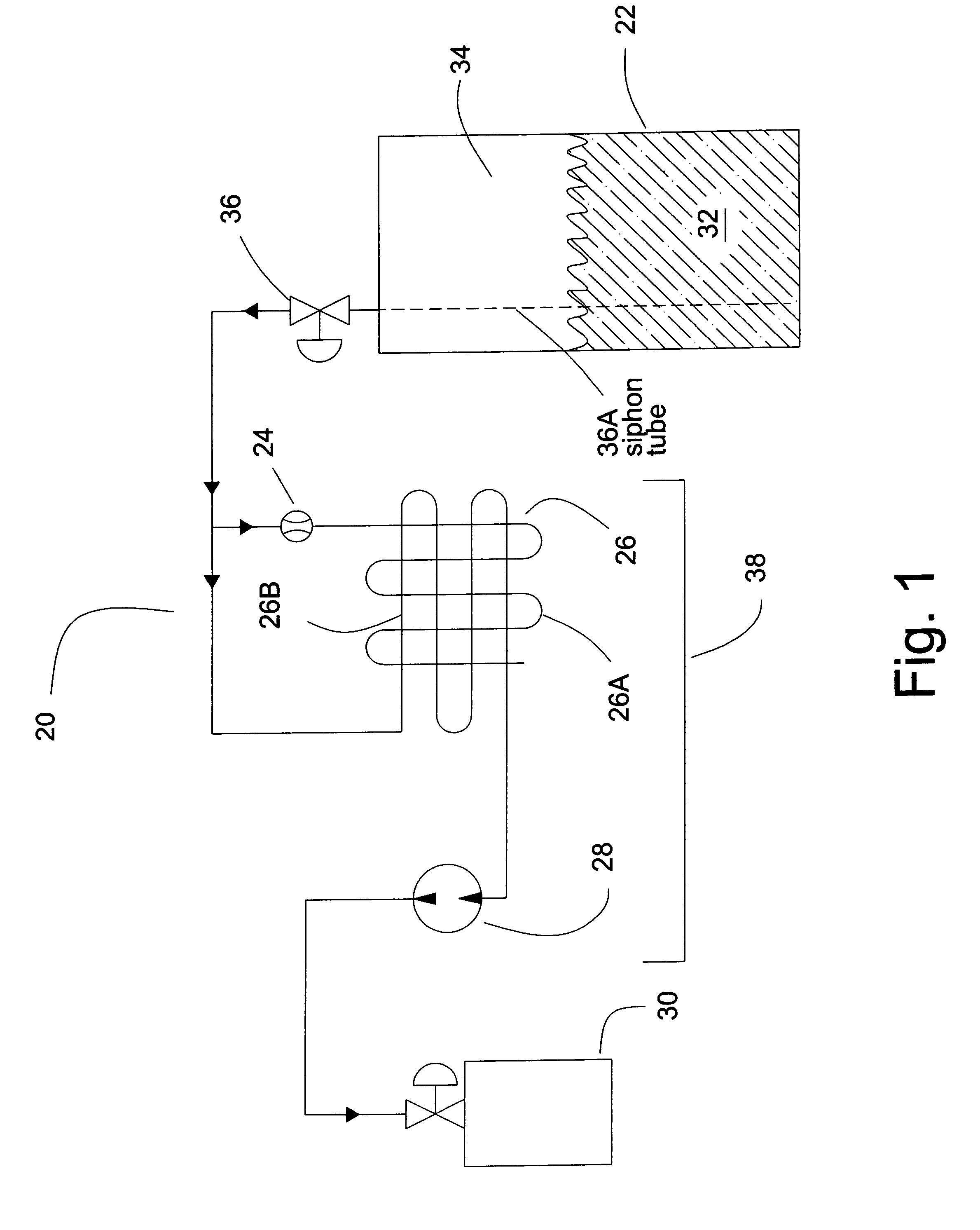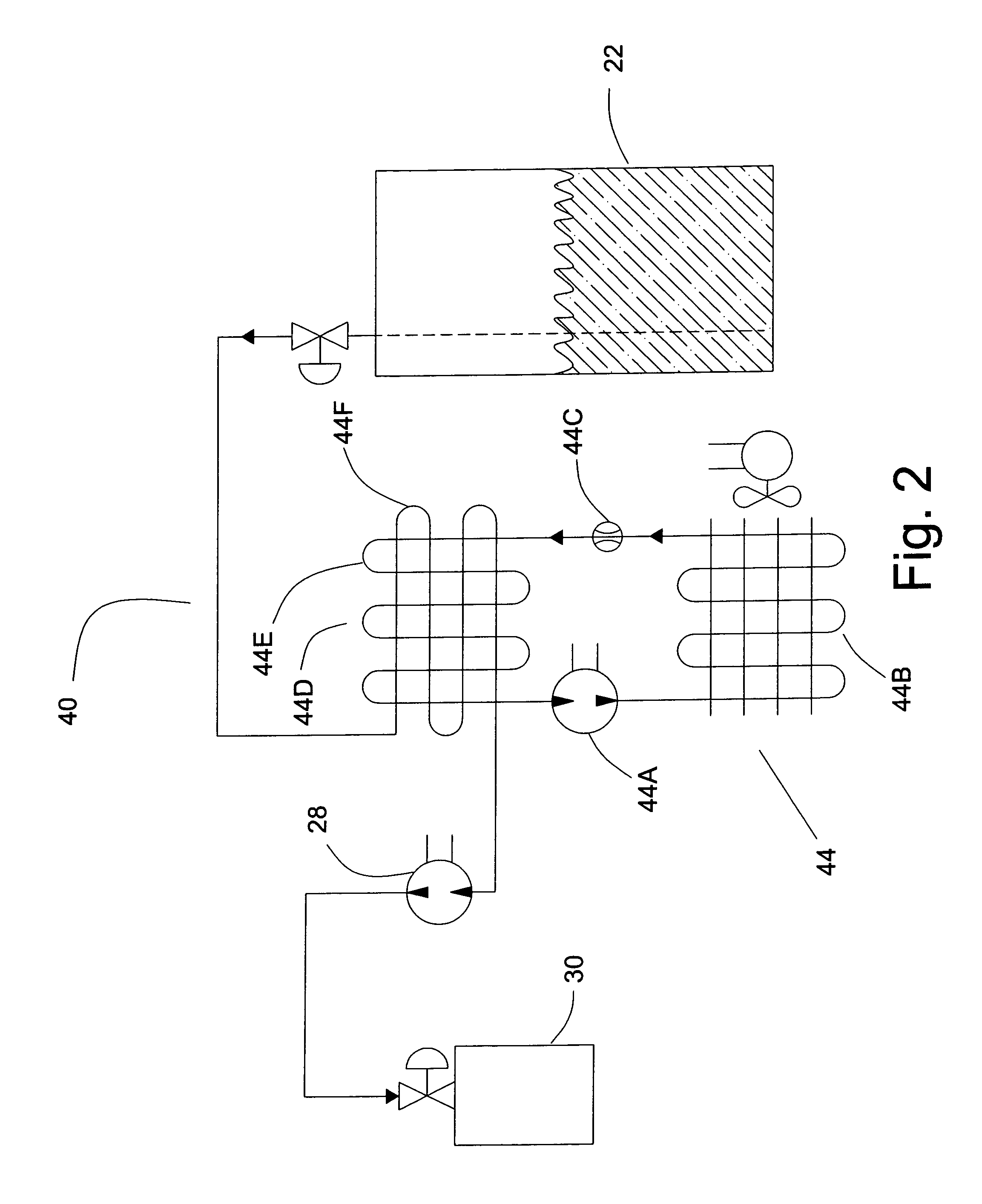System and method of pumping liquified gas
a technology of liquid gas and pumping station, which is applied in the direction of positive displacement liquid engine, container discharging method, liquid fuel engine, etc., can solve the problems of increasing the difficulty of pumping station, affecting the ability to pump, so as to reduce the cost of pumping station and the cost of installation
- Summary
- Abstract
- Description
- Claims
- Application Information
AI Technical Summary
Benefits of technology
Problems solved by technology
Method used
Image
Examples
Embodiment Construction
[0011]Chart 1 is a simplified temperature-pressure chart for Carbon Dioxide (CO2). This chart graphs the equilibrium point between the boiling point (2) at 0 psig and −109.3° F. and the critical point (4) at 1056 psig and 87.9° F. The critical point is the point after which all liquid vaporizes without regard to pressure.
[0012]Often commercially available refrigerated CO2 is stored at around 0° F. (6) resulting in a pressure of about 290 psig. Conventionally the industrial gas fill plants have pumped, or increased the pressure of this refrigerated liquefied CO2 as it went into non-refrigerated cylinders at say 70° F., which results in a pressure increase of about 550 psig. When pumping care must be taken to ensure the liquid is not subjected to lower pressure (8) or higher temperatures (10) as this will cause the gas to vaporize, impeding the pumping process.
[0013]Applicants process and system makes use of a heat exchanger to subcool the liquid between the storage vessel and the pum...
PUM
 Login to View More
Login to View More Abstract
Description
Claims
Application Information
 Login to View More
Login to View More - R&D
- Intellectual Property
- Life Sciences
- Materials
- Tech Scout
- Unparalleled Data Quality
- Higher Quality Content
- 60% Fewer Hallucinations
Browse by: Latest US Patents, China's latest patents, Technical Efficacy Thesaurus, Application Domain, Technology Topic, Popular Technical Reports.
© 2025 PatSnap. All rights reserved.Legal|Privacy policy|Modern Slavery Act Transparency Statement|Sitemap|About US| Contact US: help@patsnap.com



